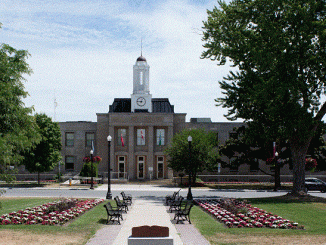
Peterborough’s bike lane strategy reads like a love letter to Dutch urbanism penned by someone who’s never actually been to Amsterdam. There’s an earnestness to it — the kind that produces PowerPoints, not progress. We’ve painted green lines on a few streets, dropped some bollards like decorative toothpicks, and congratulated ourselves on ushering in a new cycling era. Meanwhile, half the lanes end abruptly at intersections like cliff edges for the brave.
Bethune Street, the flagship corridor of “active transportation,” clocked in at $53 million, according to the City of Peterborough — a price tag shared between three levels of government to ensure everyone could take equal credit for the inconvenience. The rebuild included stormwater fixes, new sidewalks, landscaping, and the much-touted bike lanes — the holy grail of progressive infrastructure. A triumph, if you ignore the months of torn-up streets, lost parking, and construction dust so thick it should’ve come with a health warning.
According to the city, about one in ten residents already bike or walk to work. Not bad — until you realize that’s roughly the same share who do it because they can’t afford gas. Cycling to work makes up about 2.5 percent of trips, according to the 2021 Transportation Master Plan, and even the most optimistic projections cap it at 7 to 10 percent someday, which is bureaucratese for “if a meteor doesn’t hit us first.” Still, on some corridors, the numbers are surprisingly strong — according to the 2020 Active Transportation Report, 491 bikes a day were counted on George Street after lanes went in. For a mid-sized Ontario city with six months of winter and four months of potholes, that’s basically Copenhagen.
The city’s cycling network currently covers more than 75 kilometres of on-road and off-road routes, according to Peterborough’s Cycling Master Plan. Some of it is practical — the painted lanes, the buffered corridors — and some of it is downright scenic, threading through the Rotary Trail, Jackson Park, and up toward Trent University. It even connects to the Trans Canada Trail, meaning a determined rider can pedal all the way to Lindsay or beyond, provided they’ve packed water, courage, and a sense of humour about rural signage.
And yet, every kilometre of bike lane carries the weight of a moral crusade. To ride one is to be a statement — part health nut, part eco-warrior, part poor soul praying a delivery van sees you in time. The infrastructure is improving, but like most things Peterborough builds, it’s a half-gesture toward modernity wrapped in a traffic cone. The lanes are there, but the culture isn’t — not yet.
Behind the scenes, the torchbearers of pedal-powered progress are a familiar crew. GreenUP, the city’s environmental non-profit, has been promoting cycling since before “active transportation” was a term. The Peterborough Bicycle Advisory Committee (P-BAC) — a mix of commuters, advocates, and engineers — shows up at meetings with charts and patient smiles, reminding councillors that bike lanes aren’t just for “the spandex crowd.” They’re supported by staff in the transportation division, who genuinely seem to believe Peterborough can pull this off — even if their optimism has to survive a municipal budget cycle.
Then there are the skeptics. The business owners who swear every bollard is a barrier to commerce. The suburban commuters who see a cyclist once a week and wonder why there’s a painted lane where a turning lane used to be. And, of course, the online chorus — the Facebook experts who insist the city should “fix the roads first” without realizing that’s literally what these projects do.
Still, the cyclists keep pedaling. There’s something defiant about it — a quiet rebellion rolling through morning fog and late-night traffic alike. You see them downtown, on the Rotary Trail, gliding past the hydro towers toward Trent. They’re not waiting for the city to get it perfect; they’re just getting there faster.
Peterborough’s cycling planners deserve credit for ambition. They want a network that connects the north end to the south without crossing three different eras of municipal design. But ambition without a budget is just wishful asphalt. The dream is noble: safer streets, fewer emissions, a city that breathes. The reality? Another committee report “pending review,” and a public still arguing about where to park their trucks.
The thing is, the city’s cycling plan isn’t wrong. It’s just Peterborough-sized — big dreams scaled to a town that still measures its growth in parking spots. Maybe that’s fine. Maybe progress here doesn’t look like Amsterdam. Maybe it looks like a kid pedaling to school on a painted lane that didn’t exist five years ago. And maybe that’s how it starts — with a squeaky wheel, literally, getting the grease.



